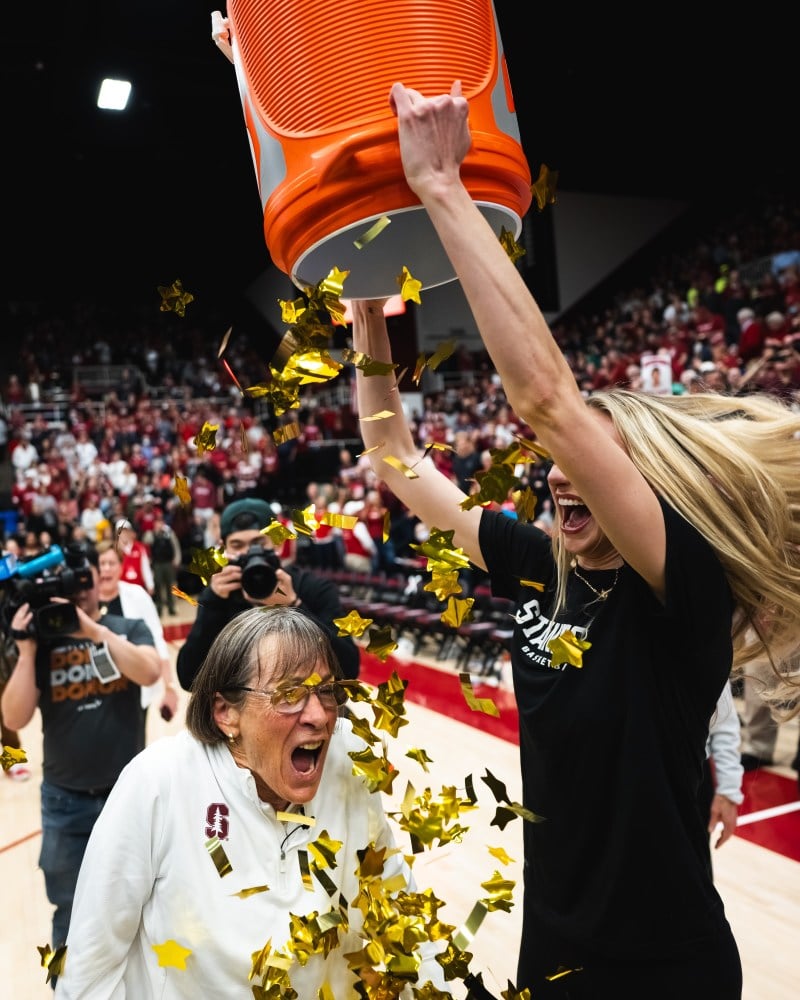Sunday was a historic day in basketball, as Stanford women’s basketball coach Tara VanDerveer surpassed former Duke’s Mike Krzyzewski for the most wins in college basketball history. Prominent figures in sports from Warriors head coach Steve Kerr to Krzyzewski himself congratulated VanDerveer on the historic milestone. As confetti rained down on VanDerveer and former players expressed their gratitude through genuine soliloquies, it was impossible not to recognize this was a significant moment in college basketball.
Yet, there’s still more work to be accomplished.
Gender bias remains a prominent problem across school, collegiate and professional sports today. Despite making up slightly more than 40% of sports participants, women’s sports only receive about 15% of sports media coverage. According to a study by Adelphi University late last year, professional male athletes make anywhere from 15% to over 100% more than their female counterparts.
“When you look at attendance and things like that, I just feel like women’s sports don’t get the support or the investment that most of the men’s sports do,” said former Stanford running back Kerry Carter ’03.
An independent report commissioned by the NCAA later found numerous examples of gender inequity baked into the organization’s practices, including a consistent undervaluation of the women’s basketball media deal by tens of millions of dollars.
Investment is also lacking for female athletes in high school settings. While Title IX stipulates that public schools are supposed to provide equitable access to sports opportunities for men and women, men’s and women’s sports are frequently funded unequally in secondary schools. This lack of funding, paired with preconceived ideas about women’s lower athletic ability, contribute to the low publicity of women’s sports.
Sophomore guard Lauren Green said that she experienced inequitable treatment in sports settings as early as middle school. She said that even though the girls’ team was much more successful than the boys’ team, the bleachers at the boys’ games were always full. They remained empty at the girls’ games.
This lack of recognition can affect performance. Green recalled one game against a rival of her high school where the bleachers were packed, as opposed to being empty like they typically were.
“My school was supposed to get blown out in that game, and it ended up coming down to free throws because we could feed off the energy of our classmates,” said Green. “We never had that sort of energy to feed off, so we always had to create it ourselves.”
Stavi Papadaki ’26 recalled similar experiences playing in her native Greece. Although Greece does not typically have opportunities to play sports through school, Papadaki took advantage of a local club team that wound up being extremely successful. Her women’s basketball team had managed to advance to division one — the highest level of basketball in Greece. Even though the local men’s team was still playing at a lower level, they had more crowded games.
However, according to Carter, Green and Papadaki, Stanford is leaps ahead of the norm when it comes to gender equality in sports, particularly basketball.
In Carter’s experience, Stanford was unique in how everyone supported one another regardless of gender. Part of this, he said, was because of the sheer talent of the female athletes attending Stanford at the time.
Green and Papadaki also agreed, despite the 20 years separating them from Carter.
“I believe that the interaction of supporting the players during the games is what makes the atmosphere in the gym magical,” Papadaki said. “The success would still be there [without it]. It just makes it so much more impactful when the people support us.”
Despite the support for women’s basketball at Stanford, college basketball still has a long way to go before reaching gender equality. It was only just a few years ago when the NCAA was called out for “blatant sexism” following women’s NCAA tournament teams being given inadequate equipment compared to the men’s teams.
But with women’s college basketball getting increased press due to stars like Iowa’s Caitlin Clark, USC’s JuJu Watkins and LSU’s Angel Reese, the next few years could be a turning point for the sport’s popularity.
